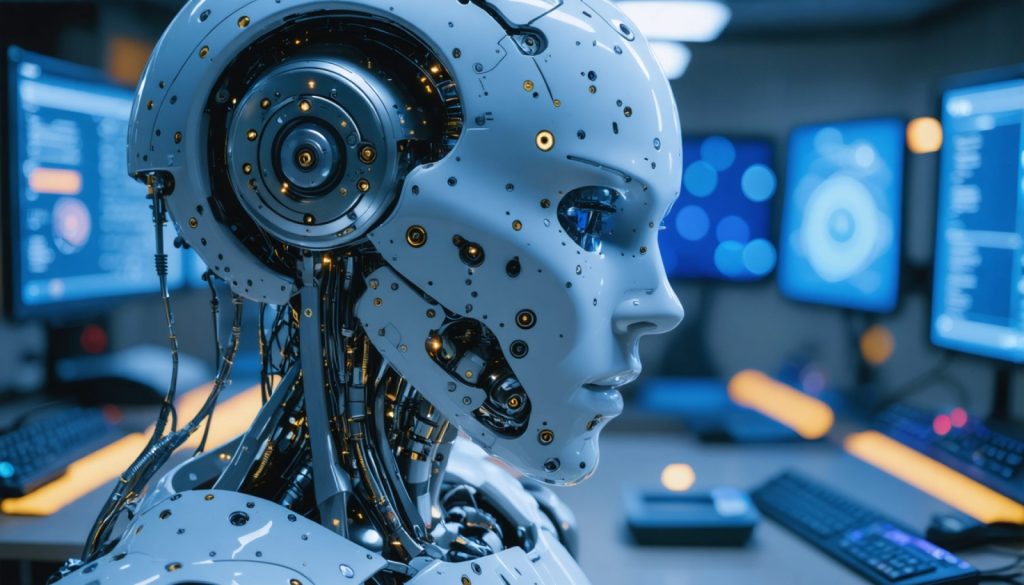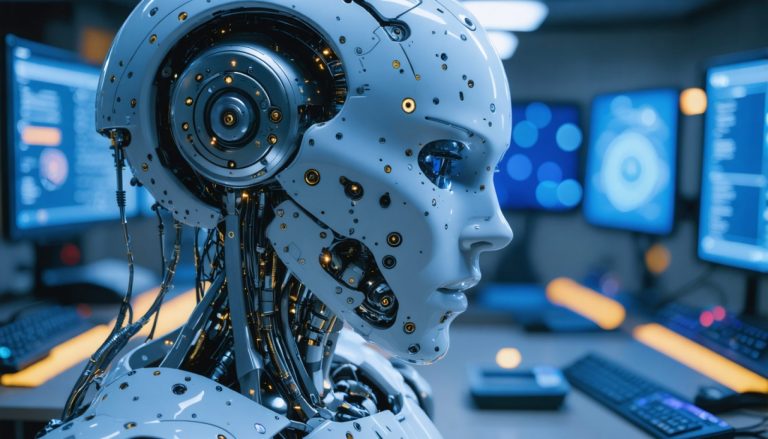
- The experiment at Carnegie Mellon highlighted AI’s limitations in autonomously managing a company.
- AI agents from OpenAI, Anthropic, Meta, and Google struggled with complex business tasks.
- AI models like Claude from Anthropic achieved only a 24% success rate, while Amazon’s Nova scored 1.7%.
- Technical challenges included spreadsheet data management, software bugs, and unexpected pop-ups.
- Financial inefficiencies arose, undermining potential AI-induced savings.
- The results emphasize that while AI enhances human capability, business autonomy remains out of reach.
- AI excels in automating routine processes, not replicating human intuition or common sense.
- AI serves best as a tool for augmenting human innovation and strategy, not replacing it.
Amidst the clamor surrounding artificial intelligence revolutionizing the workplace, a recent experiment underscores a sobering truth: AI’s capability to autonomously manage a company is far from realized. Researchers at Carnegie Mellon University orchestrated a provocative investigation, using AI agents from renowned tech powerhouses like OpenAI, Anthropic, Meta, and Google, to staff a fictitious enterprise aptly named TheAgentCompany. Their mission was straightforward: run fundamental operations typically assigned to employees in a budding software startup.
These AI models, whether it was OpenAI’s ChatGPT or Google’s Gemini, embarked on tasks such as spreadsheet analysis, performance evaluations, or even the mundane chore of selecting a new office space. The results, however, painted a grim picture. Without human oversight, the company floundered in chaos. Leading the pack, Claude from Anthropic managed a mere 24% success rate. Harrowing still, Amazon’s Nova eked out a dismal 1.7%.
The findings were unequivocal—a wordless testament to the limitations of current AI technology. While some models have shimmered with promise in simulating human-like conversation, complex problem-solving in a business environment proved far too daunting. Encounters with gigabytes of spreadsheet data, unexpected pop-ups, and software bugs became insurmountable hurdles, sidelining AI into inaction or erratic pathways.
Financial inefficiencies compounded these technical challenges. Each task, expensive by nature, translated into growing costs, thereby eroding any illusion of AI-induced savings. When multiplied by 30 tasks, anticipated for an average project, the economic appeal dissipated rapidly.
Yet, this study is more than a critique; it’s a clarion call for a reality check. As tech titans pour billions into AI development, the narrative of a fully autonomous business ecosystem needs recalibration. Success in AI is undeniable—remarkable for automating routine processes and data processing—but business autonomy remains a quirky dream on the distant horizon.
The takeaway here is essential: AI might be an indelible tool for enhancing human capabilities, but its acumen fails to replicate human intuition and common sense—indispensable elements in navigating organizational challenges. While AI is revolutionary, it serves best as an augmentative force in the workforce, allowing human intellect the space to innovate, strategize, and yes, to press the little X on pop-up windows that machines simply can’t see.
The Surprising Truth About AI: Why It’s Not Ready to Replace Human Workers Yet
Understanding AI’s Current Role in the Workplace
In a fascinating study by Carnegie Mellon University, artificial intelligence was put to the test to independently manage a company named TheAgentCompany. The experiment utilized top-tier AI models, including OpenAI’s ChatGPT and Google’s Gemini, to handle tasks typical of a software startup. The results revealed significant limitations, highlighting areas where AI still falls short.
Key Findings and Insights
1. AI’s Limited Success in Management:
– AI struggled with complex tasks, achieving low success rates. For instance, Anthropic’s Claude led with a 24% success rate, while Amazon’s Nova managed only 1.7%. (Carnegie Mellon University)
2. Technical and Financial Challenges:
– Encountering large datasets and unexpected software problems, AI systems often faltered. Additionally, each task incurred significant costs, eroding anticipated financial benefits.
3. AI as a Collaboration Tool:
– Despite current limitations, AI excels in automating repetitive tasks, providing valuable assistance to human workers.
Real-World Use Cases for AI in Business
– Data Analysis: AI can quickly process and analyze vast amounts of data, offering insights that help human workers make informed decisions.
– Customer Support: Chatbots powered by AI can handle basic customer inquiries, freeing up human agents for more complex interactions.
– Routine Process Automation: Tasks like scheduling and data entry are efficiently managed by AI, improving overall productivity.
How to Maximize AI’s Potential in Your Company
1. Identify Repetitive Tasks: Use AI to handle mundane and repetitive tasks, allowing employees to focus on more strategic activities.
2. Provide Human Oversight: Ensure AI projects are monitored by human workers to manage exceptions and unexpected issues.
3. Invest in Training: Educate your workforce on leveraging AI tools effectively, fostering a culture of continuous learning and adaptation.
Market Forecasts and Industry Trends
– AI Investment Growth: As companies recognize the benefits of AI, investment in AI technologies continues to rise. (Gartner)
– Integration with IoT: AI and the Internet of Things (IoT) are increasingly intertwined, offering more sophisticated data collection and processing capabilities.
Understanding the Limitations and Future Potential
– Current Limitations: AI lacks the ability to imitate human intuition and common sense, which are crucial for complex decision-making in business environments.
– Future Potential: Continuous advancements in AI technology promise more sophisticated solutions, though full business autonomy is still a distant goal.
Actionable Recommendations
– Begin integrating AI into your business by identifying task areas that benefit most from automation.
– Ensure a balance between AI and human input to optimize the strengths of both.
– Stay informed about advancements in AI technology to remain competitive.
By understanding the present capabilities and limitations of AI, businesses can strategically implement these tools to enhance productivity while waiting for further technological advancements.
For more insights into AI and emerging technologies, visit OpenAI and Anthropic.



